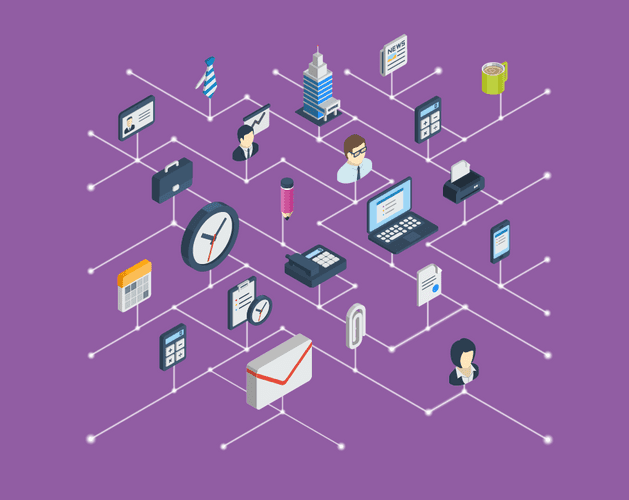Digital Workspace is a very hot topic currently within the IT industry. It’s a key focus for many companies as this business transformation increases productivity, allows true mobility and enables improved agility through flexible solutions to suit ever changing needs. So, what’s driving this change and why now?
I believe there are three main factors putting pressure on companies to ensure they’re prepared:
The 'Modern' Workforce
By 2020, over 55% of employees in the workplace will be millennials. Millennials spend, on average, 5 hours per day on their smart phones and devices. As we well know, this generation are familiar to using multiple devices and platforms; they’ve grown up with information readily at their fingertips and a lot use personal data tracking in their everyday lives. Their expectation is to have the latest and greatest technology refreshed sustainably at regular increasing periods. They’re true ‘digital natives’ who are used to holding information securely in the cloud. This is only going to increase as ‘Generation Z’ start employment.
The 'Expected' Workplace
Currently 62% of employees work from more than one office location and over 52% of companies have to support remote workers which means office space has reduced by 40% in the past decade. People are used to working ‘on-the-go’, in shared spaces and from hot desks – true flexibility on where and how they work.
The 'Connected' Workstyle
47% of employees check their work email after 10pm and 32% of work is done outside the office. We’re becoming increasingly ‘switched on’ with little differentiation between work/life balance, made easy with a cloud centric mindset. Currently 59% of employees are unhappy with collaboration technology available to deliver this need.
To summarise, the above challenges can be simplified and grouped into three primary, desired outcomes:
(1) Mobility – need for employees to work securely and remotely.
(2) Flexibility – need for employees to use various devices and platforms.
(3) Productivity – need for employees to access all data, any device, anywhere.
What's the North Star - what are we aiming at?
My personal ambition in the future is having the ability to offer true consumption-based contracts covering multiple end user solutions (hardware, software and services) on a ‘pick and mix’ type contract to suit the bespoke need. These contracts will be highly enhanced and enriched with true analytics and proactive support. These insights will allow providers to offer true value-add into customers giving them ability to flex the hardware throughout the contract, made easy by embracing the cloud, delivering the agility needed to keep up with changing work styles.
Consumption based contracts are truly becoming a strong undercurrent within IT as companies try to match what people can access in everyday life, for example with mobile phone contracts. One of the best examples of a provider being able to simplify this type of offering into the work environment is WeWork, who launched in 2010. For those who don’t know what they do, quite simply, they sell rented office space. However, in the space of 9 years they’ve grown exponentially and were recently valued at $21 billion. What have they done that’s caused this growth? They’ve offered simplified consumption style monthly contracts based on delivering certain desired outcomes when companies take a membership. WeWork promises to transform buildings into collaborative workspaces that create a community to drive productivity. In fact, if you look at their mission statement it mentions all three desired outcomes listed above. They prove there is a market for these types of offerings. Originally it was aimed at small mid-market companies but now over 20% of their customers are large enterprise customers.
I also recently attended and spoke at a global IT event hosted by HP. I was astonished at how much of the focus was on data driven, consumption-based offerings. Many of the key trend sessions were promoting this message supported by some leading research companies offering factual data. Below are just some that stood out to me:
- 40% of small to medium sized businesses consider ‘as-a-service’ to be critical.
- 35% of Fortune 1000 companies will have transitioned to ‘device-as-a-service’ by the end of 2019.
- 70% of companies are planning for or considering investing in effective analytics tools to offer insights.
- 40% of the US workforce will be using ‘as-a-service’ type contracts for end user hardware by 2020.
It’s a really exciting time within Digital Workspace. I don’t believe anyone has reached the ‘north star’ yet, but at Softcat we’re leading the way with offerings like device-as-a-service and were recently recognised at the HP Global Partner event as ‘HP DaaS Partner of the Year’. In fact, a lot of what I’ve mentioned above fits nicely within the other three Softcat IT priorities and all play a key deliverable in achieving the most successful solution. The three priorities are: IT Intelligence – the ability to provide intelligent solutions to match the right hardware for users, increasing productivity and drive cost savings through to true consumption; Hybrid infrastructure – ensuring we can provide the right infrastructure to allow the workforce the mobility and access they demand; and Cyber Security – confidently protecting users and data throughout the solution.
Get in Touch
Please reach out to your Softcat account manager to understand how we can help you through the journey of Digital Workspace or any of the other three It priorities listed above, or hit the button below.

